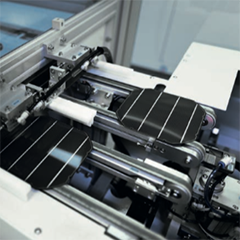Brett Jarman, VP Commercial Business Development at Sunflare spared time to share the company’s vison with PES. Their panels are unique and they are now spending equal time developing commercial and residential solutions. They are super light, can be customized, low on emissions and can be installed in places which were previously thought impossible.
PES: Hi Brett, thanks for coming in to talk with us. Could you begin by explaining a little about the background of Sunflare and the importance of the solar/PV industry to you?
Brett Jarman: My pleasure. Sunflare has been in development for almost a decade, perfecting the next generation of CIGS technology. Our mission is to reduce CO2 worldwide. For that, solar needs to be installed universally. This is why Sunflare modules are light, thin, flexible and rugged, so they can go everywhere traditional solar is already installed, and many places they can only dream of for the moment.
Our SUN2 cells are made of Copper, Indium, Gallium and Selenide on a .127 mm stainless steel substrate. Unlike traditional solar panels, which are covered in glass, our modules are more durable because the SUN2 cells are encapsulated between strong polymer sheets.
PES: We have been hearing about your CIGS panels and would like to know more: what makes them different from other CIGS modules?
BJ: With our proprietary CIGS manufacturing technology, we have eliminated the issues that plagued the CIGS industry in the past. Unlike the old CIGS roll-by-roll processing, our precise cell-by-cell manufacturing is tightly controlled at every juncture. Thus, increasing yields and eliminating waste.
Part of that precision comes from a high degree of monitoring built into each step of the system. Each cell has a QR code that records the exact conditions at each stage to ensure uniform quality. It’s a classic case of getting the right hardware and software together.
Sunflare provided a finely-honed design and worked tirelessly with their innovative equipment partner to create the proprietary manufacturing process. The resulting system is a compact, fully automatic deposition system for CIGS solar cell manufacturing. It’s designed for high throughput, operational stability, optimized layer uniformity and superior material utilization.
The science was mostly there for CIGS. What was required was innovative equipment matched with a precise formulation of the cells. This allows us to do what no manufacturer of CIGS thin film has done before—mass produce high quality, efficient, flexible solar panels.
PES: What are the benefits to the customer and end user?
BJ: Sunflare performs best on commercial roofs where weight and multiple penetrations are a major issue. Sunflare is 86% lighter than traditional commercial roofing installations and there is no need for racking or heavy ballasts.
There is no need to penetrate roofs to install Sunflare. Compare that to the traditional solar installation, which, can add 1000s of new penetrations, opening up a serious threat from new leaks.
To reduce shading issues, we’ve integrated bypass diodes on every cell. Therefore, shading doesn’t affect our modules like it does traditional solar. Sunflare can be added to existing parking structures, turning them from a mere canopy into a revenue-generating asset. Due to the fact that they are lightweight and frameless, existing parking structures can be used. There’s no demolition or removal needed, meaning minimal disruption or displacement of tenants, customers, or employees.
They are rugged enough to withstand the elements and impacts from objects during inclement weather. In addition, microcracking, common in more brittle silicon cells, is eliminated because CIGS cell chemistry is inherently flexible.






























